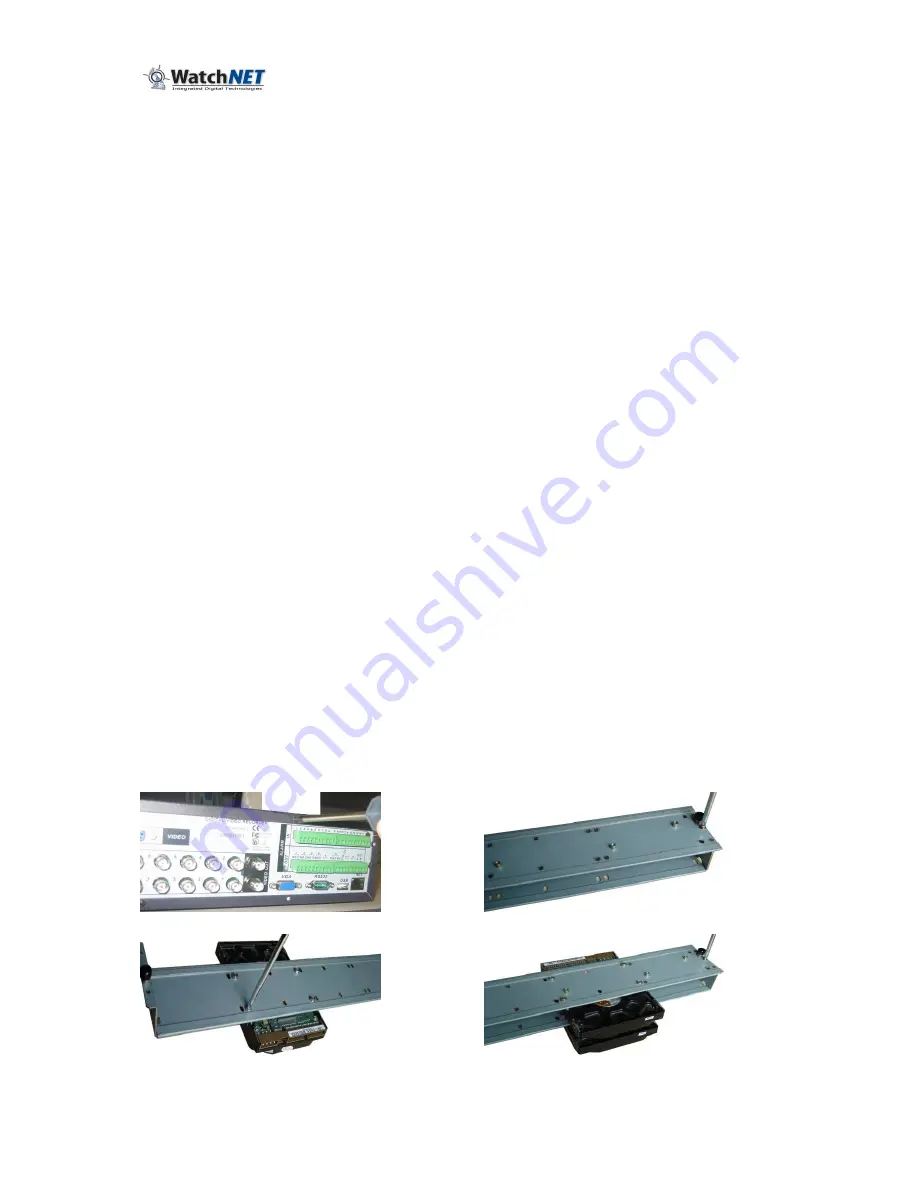
20
3 Installation and Connections
Note: Any installation and all operations should conform to the local electric
safety rules.
3.1
Check Unpacked DVR
When receiving the DVR from the shipping agency, please check whether there is
any visible physical damage to the DVR. The protective materials used for the
packaging of the DVR can protect against most accidental clashes during
transportation. Once this is verified then open the box to check the accessories.
Please check the items in accordance with the list on the warranty card. Finally
remove the protective film from the DVR.
3.2
HDD
Installation
3.2.1 Choose HDDs
We recommend Seagate HDDs of 7200rpm or higher.
3.2.2 Calculate HDD Size
This DVR series has no limit to HDD capacity. Use any 120G-750G HDD to
guarantee higher stability.
The formula of total HDD size is:
Total Capacity (MB) = Camera Amount * Recording Hours * HDD Usage Per Hour (M/h)
H.264 compression is ideal for standalone DVRs. It can save more than 30%
HDD capacity over MPEG4. When calculating the total HDD capacity, estimate
the average HDD capacity per hour for each channel. For example, for a 4-ch
DVR, the average capacity of HDD usage per hour per channel is 200M/h. Now if
the DVR have to record video for 12 hours each day for 30 days, the total
capacity of HDDs needed is:
4 channels * 30 days * 12 hours * 200 M/h = 288GB
.
So a 300G HDD or 2 160G HDDs is needed for the example.
3.2.3 HDD Installation
SATA cables, fastening screws and smart HDD shelf design are already provided
in the accessories.
Please follow the instructions below to install the hard disk.
3.2.3.1
RTS series
1. Remove the upper cover of the DVR
3. Install the HDD. Note the drive is installed upside
down, make sure bracket is in correct orientation
2. Remove the upper HDD bracket
4. Screw the two bracket parts together
Summary of Contents for RTS series
Page 1: ......
Page 61: ...61 Figure 5 378...
















































